A Beechcraft T-34 Mentor, piloted by Charlie Hogan (BA 1959)
To Fly!
For these Foster alumni aviators, flying airplanes—of every kind—is a passion like no other
Some dreamed of flying from earliest memory. Others were romanced by transcontinental travel, a magical airshow or the thrum of seaplanes alighting like mallards on lakes near their homes. Some just had aviation in the blood—or got it on the brain, an absorbing challenge requiring ultimate focus.
Whatever it was that inspired them to become pilots, there’s a veritable air force of Foster grads who fly.
Here are portraits of a few alumni aviators who fly for business, for pleasure, for heritage, for duty, for freedom, for escape, for adventure—for the boundless love of flight itself.
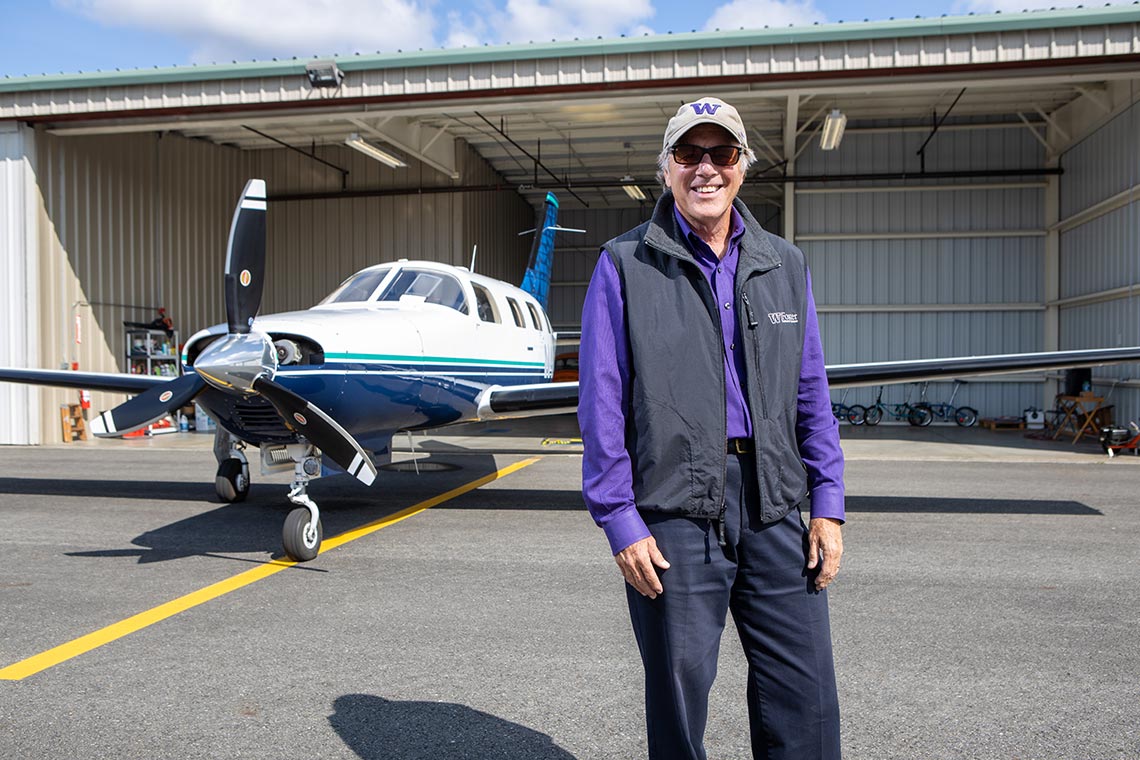
Bill Ayer (MBA 1978) led the dramatic ascent of Alaska Airlines from regional to international carrier. So it should come as no surprise that the former CEO is also an avid pilot in his own right. Has been nearly his entire life.
Ayer was just 11 when his father began teaching him about flying. He soloed at 16 and worked his way through college at the airport. And after earning his MBA at the UW, he fused interests in business and aviation into a sales job at Piper Aircraft, then founded a “micro-airline” called Air Olympia, then forged a long and accomplished career at Horizon Air and Alaska Airlines.
All the while, Ayer has flown on the side, providing a perspective-changing release from day-to-day business concerns. He’s logged more than 5,000 flight hours to date, making frequent trips around the Northwest and venturing as far as Alaska and Mexico. When he’s not teaching at the Foster School, he flies medical patients from remote locales via Angel Flight, and serves on the boards of the Aircraft Owners and Pilots Association, the National Business Aviation Association, and the Museum of Flight.
His plane of choice? A meticulously maintained 1984 Piper Malibu that he inherited from his dad. “Every airplane is a compromise,” Ayer says. “But this Malibu really fits my mission. It’s not the best at any one thing, but it does a lot really well.”
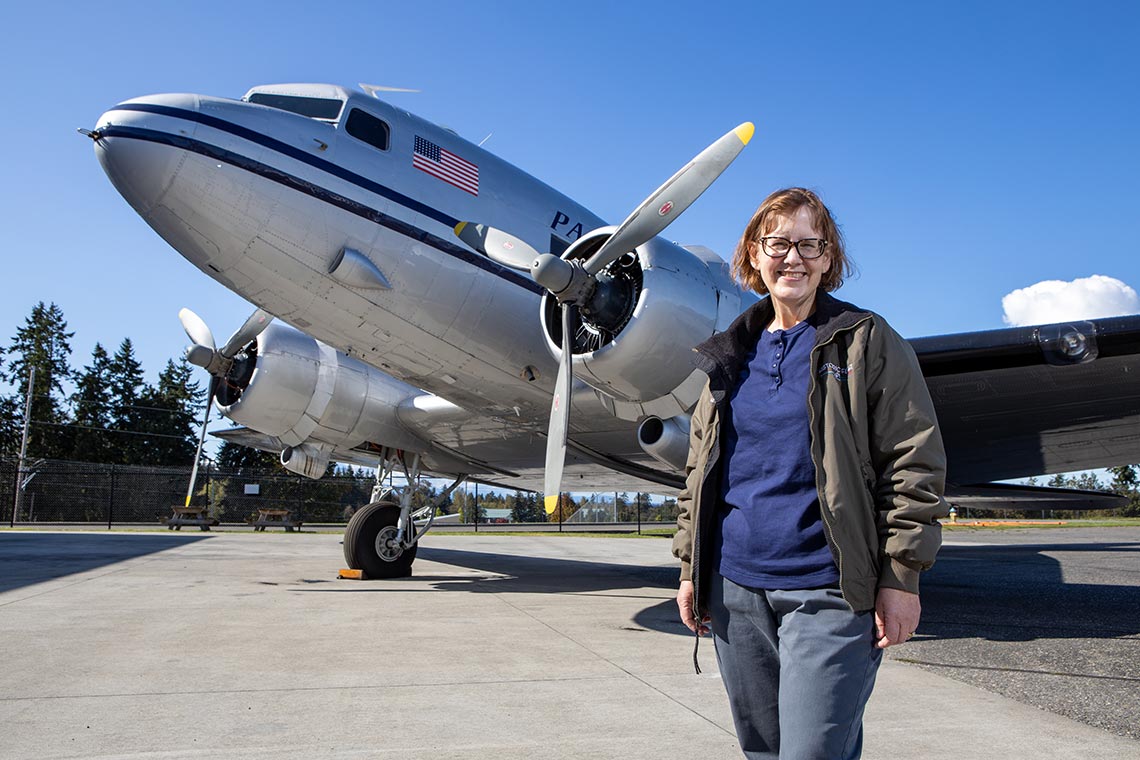
Vera Martinovich (MBA 2018) loves to fly so much that she actually lives on an airstrip. She and her husband, who married at the Oshkosh airshow under a P-51 Mustang flyover, own a small squadron of planes, including a Cessna 150, a Cessna 185 Skywagon (on floats), a Beechcraft Bonanza, a Beechcraft Baron and a share of a Christen Eagle.
After Hodgkin’s Lymphoma derailed her childhood dreams of becoming a military pilot, Martinovich instead studied engineering and forged a fine career managing design of next-generation aircraft at Boeing.
But flying is her passion, especially aerobatic maneuvers like rolls and stalls.
And though military missions eluded her, today Martinovich captains two classic WWII-era aircraft for Mukilteo’s Historic Flight Foundation: the DC-3, which did heavy service carrying troops and supplies, and the B-25 Mitchell bomber, which was instrumental to the legendary Doolittle Raid.
“I think about the boys who flew these,” she says. “They were 19, 20 year-olds with maybe a couple hundred hours under their belts and getting shot at.”
Not that flying a 75-year-old warplane is lacking in risk, even over peaceful skies.
And all this despite one surprising fact: “I’m afraid of heights,” Martinovich admits, with a laugh
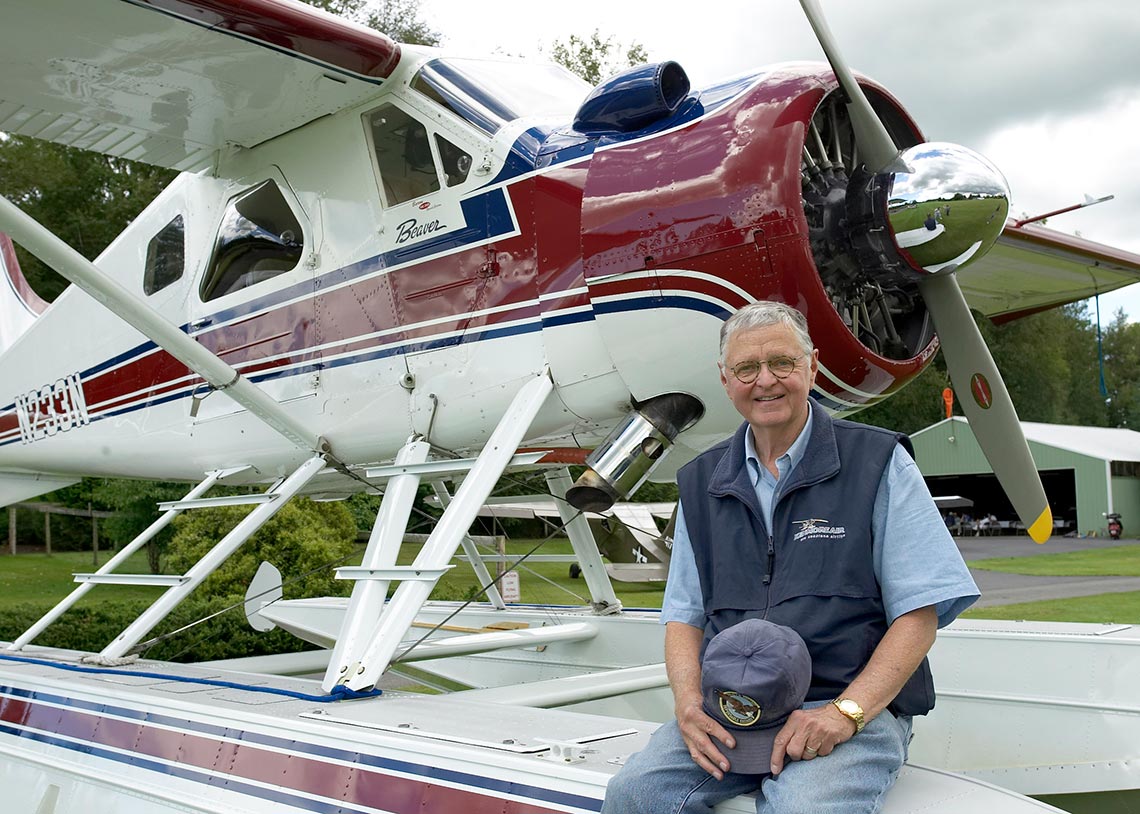
John Nils Nordstrom (BA 1959) grew up entranced by the seaplanes he watched from his childhood home on the shore of Lake Washington. But he didn’t reach the cockpit until he was 53 and beginning to imagine his retirement from the generation of co-leadership that turned Nordstrom into a nationwide brand that defined the gold standard in customer service.
Nordstrom was visiting Kenmore Air one day when the owner showed him an old wreck of a de Havilland Beaver he was refurbishing. “That’s the plane I always dreamed of flying,” he says. “And there it was, right in front of me.”
He bought it, earned his pilot’s license and multiple ratings, and bought another. His Beavers have opened a world of adventure all over the American west. And they’ve led to a famous friendship with fellow Beaver fan Harrison Ford, who met Nordstrom while scouting a plane to co-star in his 1998 bush-pilot feature, “Six Days, Seven Nights.”
Both adore the Beaver, which Nordstrom describes as the “Model T” of airplanes, with a top speed (with floats) of around 100 knots. “If you’re flying above I-5 into a headwind,” he says, “sometimes the cars are passing you.”
But speed is not his game. “An instrument pilot is trying to get someplace as fast as they can,” he says. “I’m not trying to get there as fast as I can because I’m having too much fun.”
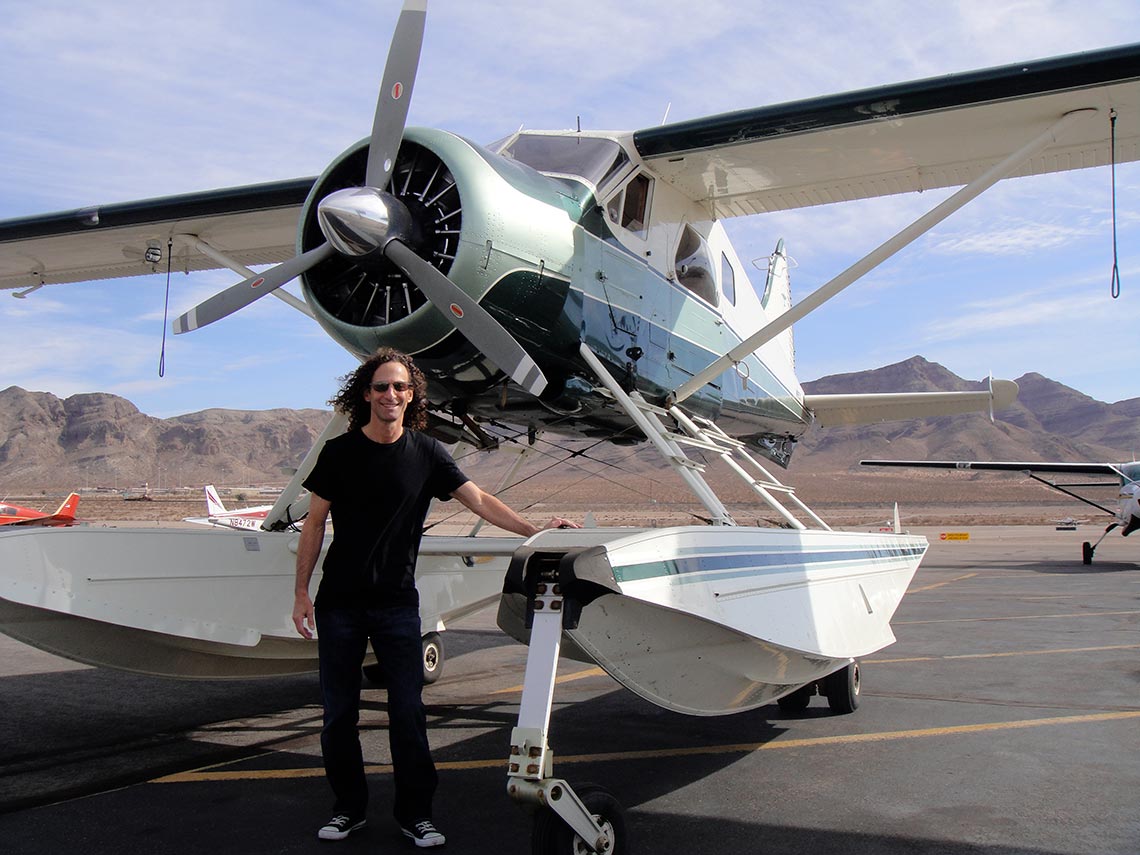
Kenneth Gorelick (BA 1978)—better known across the planet as Kenny G, one of the best-selling recording artists of all time—has “Beaver fever.” Seriously.
Gorelick, a native Seattleite, learned to fly in Southern California and has logged more than 3,500 flight hours since earning his license in 1989.
When he bought a property on Lake Washington in the early ’90s, he thought it would be amazing to fly a seaplane right off his dock.
He soon acquired the plane of his dreams: a de Havilland DHC-2 Beaver on amphibious floats.
It has proved a treasured source of relaxation and a great escape from international fame. “Being in command of an airplane is the ultimate,” Gorelick says. “I can decide to fly pretty much anywhere I want. Turn in any direction, check out this area, that area. And there are so many small airports around the US that there are limitless experiences.”
He flies the Beaver from coast to coast each summer, exploring the archipelago of lakes along the way: “It’s a wonderful trip that I’ve shared with my two sons and it’s always an adventure as one never knows how far the winds will take you. It’s truly a pioneer experience.”
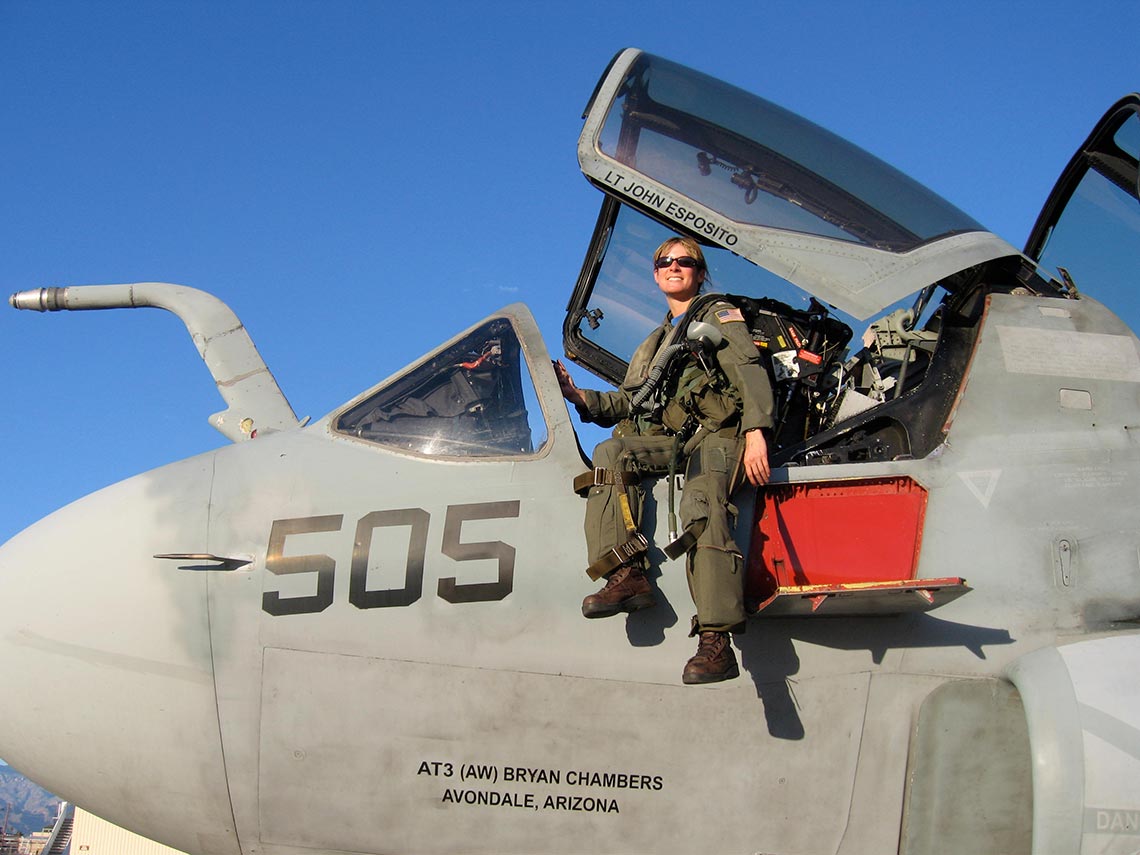
Izumi Hoehn (MBA 2018) flew to Japan each year of her childhood to visit relatives. After one trip she told her father that she wanted to be a flight attendant someday. “Why not a pilot?” he asked.
“Girls can’t be pilots,” she replied.
He laughed. “Sure they can!”
“So, I ended up being a pilot,” Hoehn says.
Not just any pilot: a U.S. Navy aviator. She received a commission at 26 with some experience in the cockpit, drawing the call sign “Cougar” from the slightly younger—and far less mature—guys in her flight school class.
And it was all guys. “There was an added pressure,” Hoehn says. “I felt like I was representing the female population. That if I did anything terrible or amazing, it would reflect on my entire gender.”
At flight school, she did everything amazingly. And she earned the captain’s seat of the EA-6B Prowler and EA-18G Growler, high-performance warplanes with electronic attack and jamming capabilities, based out of NAS Whidbey Island. During a couple of combat tours aboard the USS Abraham Lincoln, Hoehn became so adept at the nerve-jangling craft of takeoff and landing on a carrier deck that she later taught it in flight school.
Now a civilian armed with a Foster MBA, Hoehn works as an internal consultant in the Secret Service. “I’m a pencil pusher now,” she laughs. “I fly a desk.
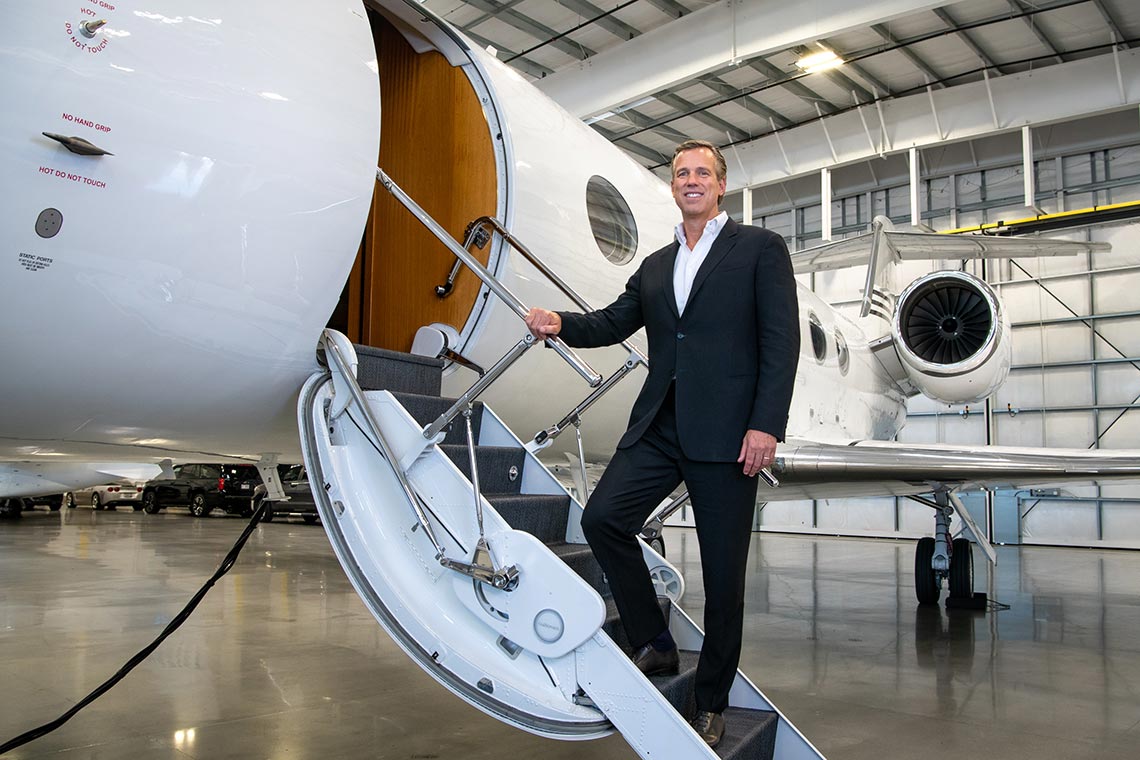
In his 10,000+ hours piloting charters for Clay Lacy Aviation, Brian Kirkdoffer (BA 1989) has visited 126 countries, circumnavigated the globe many times over, and flown a who’s who of powerful politicians, famous celebrities and corporate titans.
Not that he’s naming names. Call it “the captain’s code.”
But Kirkdoffer does allow that a captive audience of A-listers flying far above the demands of public life makes for some very personal conversations. “One of the most spectacular things about this industry is getting an intimate look at some very interesting people,” he says. “It’s a unique relationship. Most people—no matter who they are—want to talk to the pilot.”
He certainly did when he was a 14-year-old kid taking flying lessons from Clay Lacy, the legendary father of charter aviation. Lacy recruited his old student out of the UW to manage business development. To sweeten the offer, he also trained him to pilot his company’s Learjets and Gulfstreams.
Kirkdoffer flew constantly his first 20 years with Clay Lacy. The past 10 years, he has captained the company to dramatic growth and transformation into an aviation asset management firm.
“I’m one of those very fortunate people who rolled three of my passions—travel, flying and business—into a career,” he says.
Having just bought a shoreline home with his family in the Seattle area, he’s thinking a seaplane might be fun, too.
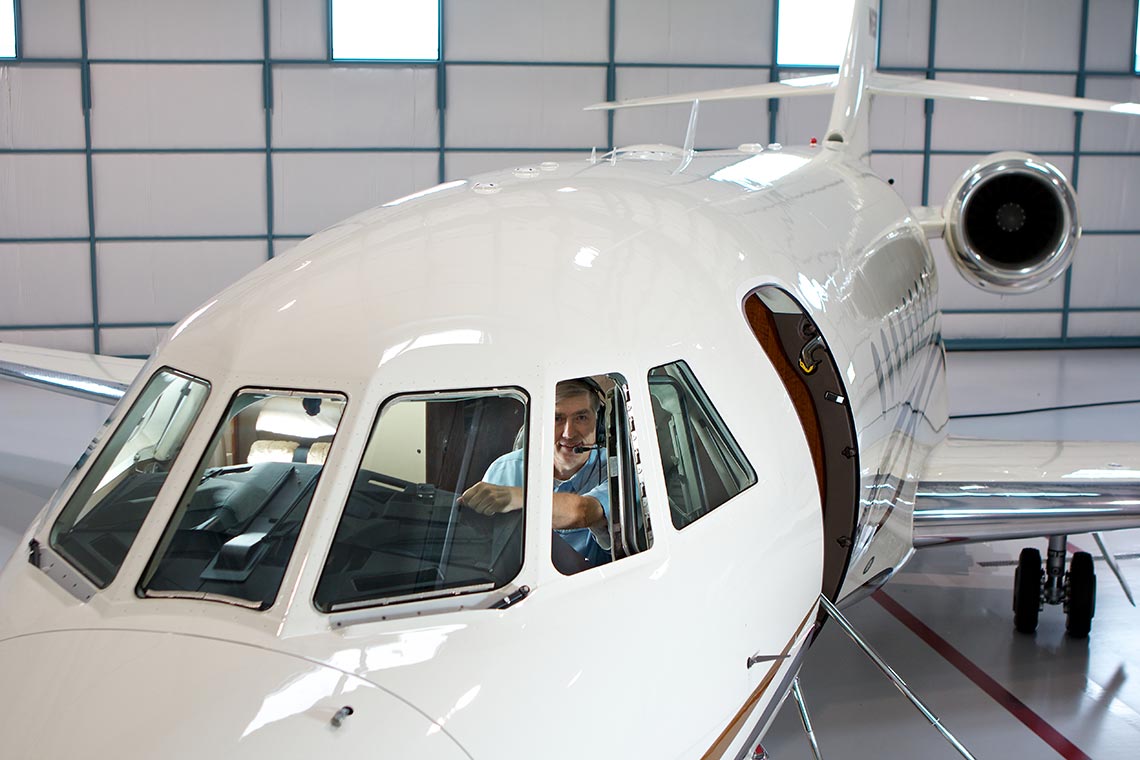
Wayne Perry (BA 1972) was president of McCaw Cellular Communications, the pioneering mobile telecom, when he began taking flying lessons on rented planes. After buying a Cessna 182, he was hooked.
He upgraded to his first business jet after 9/11 and has never regretted the decision. “It’s the one perk that you’ll never give up,” he says. “There is nothing that changes your life like being able to leave when you want to leave and arrive when you want to arrive.”
For the past decade Perry has flown a Dassault Falcon, a 10-passenger jet with a range of 4,000 miles. It’s taken him all over the world, and equipped him with a colorful collection of aviation tales. Like the time he landed in Quito, Ecuador, over an airliner that had slid into a ditch, or the helicopter crash he witnessed while taking off from Boeing Field, or when air traffic in Abu Dhabi was cleared for him to deliver the King of Sweden—a bona fide VIP—to a World Scout Foundation meeting.
Perry, a past chairman of that organization, has logged more than 5,000 hours flying and spends nearly a month each year in training to handle any emergency. “There’s an adage that there are old pilots and bold pilots, but no old bold pilots,” he says. “I’ve gotten even more conservative over the years.”
What is it they say in the Scouts? Be prepared.
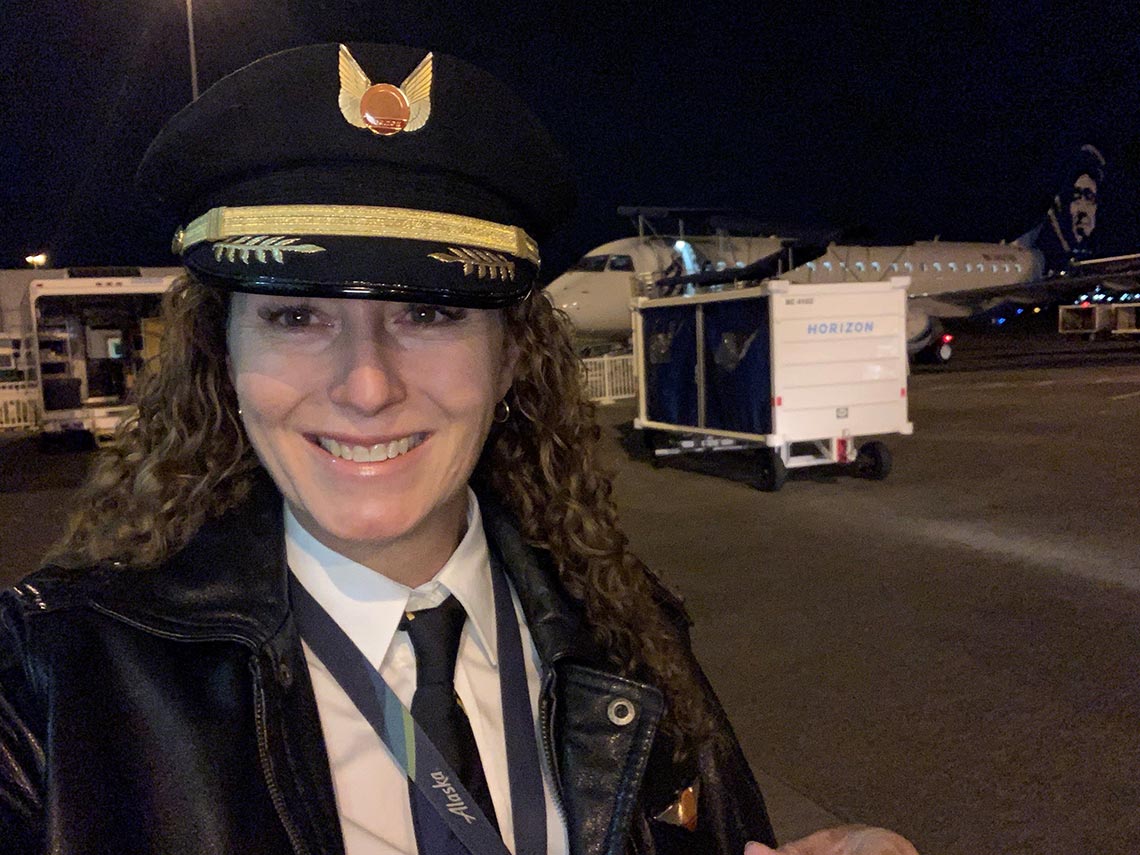
When Alison Faddis (MBA 2015) graduated from college, all of her friends headed to business or law school. “I didn’t know what to do with my life,” she says. “So I decided to take flying lessons.”
It wasn’t a stretch. As a kid, Faddis had attended airshows with her grandfather, a WWII pilot. She trained on a Cessna 152, then made her bones flying on-demand commercial and cargo for Salmon Air, a micro-carrier serving the largest roadless wilderness outside of Alaska.
In 2000 she earned her wings at Horizon Air, a subsidiary of Alaska Air Group. Over the next 18 years, she flew customers in the Bombardier Dash-8-400 and Embraer 175. After growing into management in flight operations and standards, Faddis enrolled in Foster’s Executive MBA Program.
“One thing I learned at Foster,” she says, “is that good leadership skills are transferrable.”
She put this lesson to the test earlier this year when she left a rewarding career at Alaska to become the director of flight operations at Insitu, the Boeing-owned producer of unmanned aviation vehicles and surveillance systems.
In the new year, Faddis will train to pilot—from the ground—this next-generation aircraft.
But her days inside the cockpit are hardly over. Faddis, a board member of Angel Flight, is in the market for a plane.
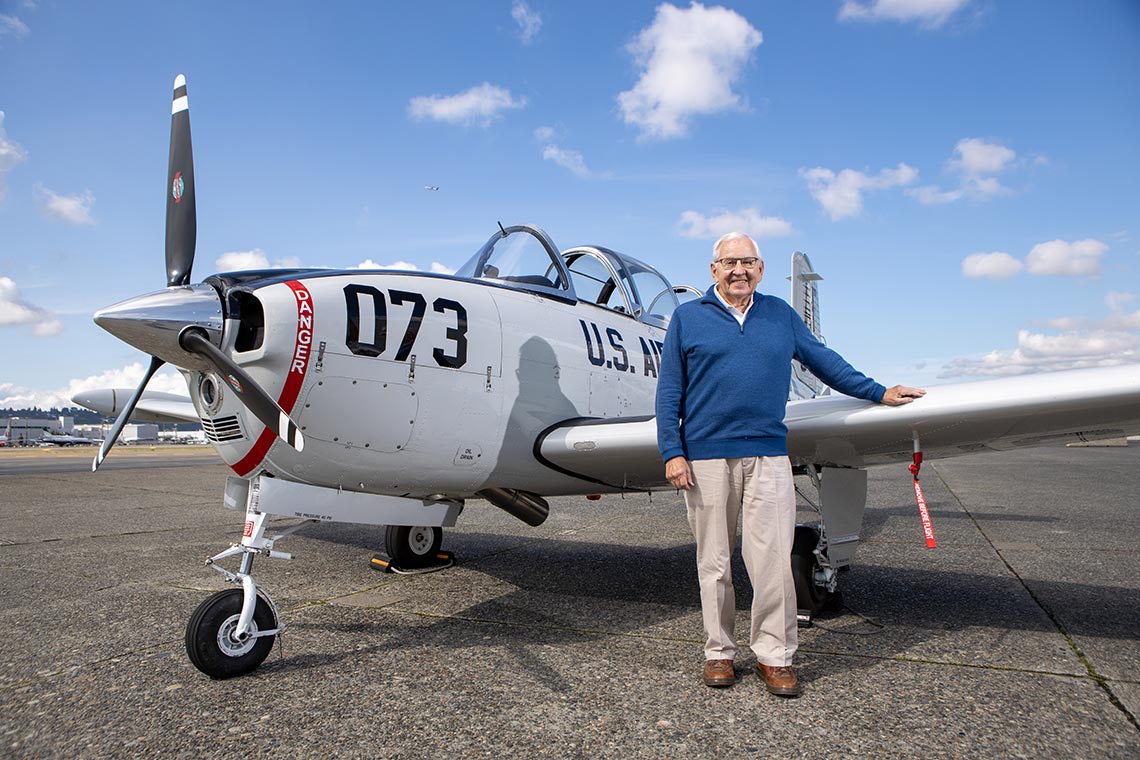
It wouldn’t be quite accurate to call Charlie Hogan (BA 1959) a “collector” of airplanes. Serial hobbyist? Maybe. Lifelong aviation fanatic? Absolutely.
Since learning to fly just before entering the UW in the late 1950s, Hogan has piloted an eclectic assortment of airplanes. There was a Cessna 140 and 170. A Beechcraft Bonanza, Baron and King Air. A T-28 Trojan military trainer. A Grumman Albatross, a Republic Seabee and a de Havilland Beaver on floats. An open-cockpit Waco Biplane (his all-time favorite). A series of Cessna Citation business jets.
Some were practical for his business developing commercial real estate. Others were pure joy on wings. “I’ve always wanted to have one that’s just fun to fly,” Hogan says.
Aviation has afforded him a lifetime of great memories. He recalls flying with friends to a remote fishing camp in Baja, Mexico in the 1970s, before any roads led there. He piloted his Bonanza to join the Civil Air Patrol’s search-and-rescue the day after Mount St. Helens erupted in 1980. And his treasured family trips up and down the west coast of North America have been too numerous to count.
He also loves attending the annual Oshkosh AirVenture airshow.
In fact, Oshkosh is where he found his latest and greatest pair of wings: a restored T-34 Mentor that trained Air Force pilots in the 1950s. It makes a fun complement to his more efficient and functional Piper Meridian.
Whatever he’s flying, Hogan is patently passionate about aviation. “I guess it just gets in your blood,” he says. “It’s a lot of work. You never stop learning and no two trips are the same. But it’s incredibly rewarding. I just love it.”
What does it feel like to pilot an airplane?
“It’s a little like reading a really good book,” says Hogan. “You know how you get so involved in it that you can hardly put it down and you feel like you’ve been transported into the story? Flying gives you that sensation, a feeling of ultimate freedom. I’ve been very fortunate to get to do it.”
His fellow Foster alumni aviators would say the same.
